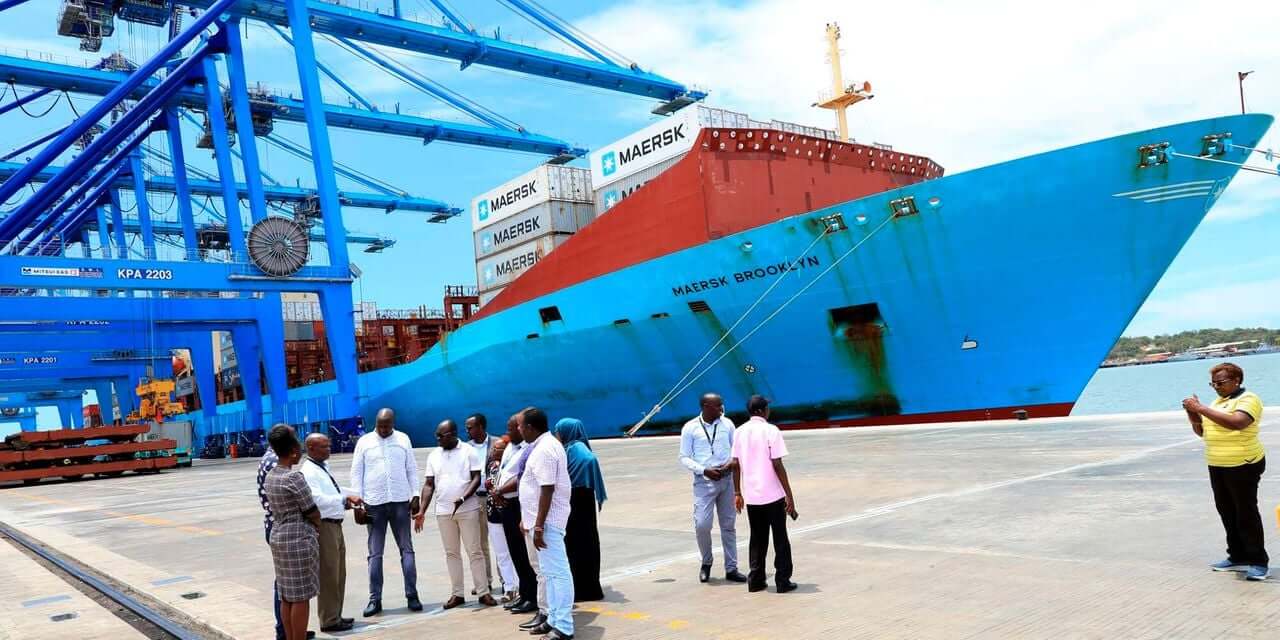
Our Projects are
Transforming African Trade
Quick Contacts
2nd Floor, Fidelity Insurance Centre Waiyaki Way, Westlands

Cargo volumes through Mombasa port, a gateway to several countries in East Africa, have defied a global economic crunch to post growth in the first nine months of this year.
The latest data by the Kenya Ports Authority (KPA) shows the total throughput for the period under review grew by 12.9 per cent to register 26.6 million tonnes compared to the 25.8 million tonnes handled in the same period last year.
This represents 552,461 million tonnes (2.1 per cent) above the set target with total imports recording 16.2 per cent growth with 532,176 twenty-foot equivalent units (Teus) passing through the port in the first nine months this year.
This is the highest growth since outbreak of Covid-19 in 2020 with an increase in efficiency coupled with heavy investment in both infrastructure and equipment bearing fruit.
KPA managing director William Ruto remains optimistic the port will surpass last year’s target.
“We are focused to ensure we increase our throughput after we acquired new cargo handling equipment and also opened a number of access routes which have increased efficiency thus attracting more clients,” he said.
The data shows exports registered 14.4 per cent equivalent to 519,819 teus exported whereas Tanzania continues to benefit from the recently revamped Mtwara port to eat into Mombasa’s transshipment share to register a decline of 19.3 per cent.
Despite registering a decline of 3.2 per cent in restows and 19.3 in transshipment, Mombasa port withstood current global inflation to register 1,191,282 teus this year compared to 1,083,387 teus in the first nine months last year representing a 10 per cent difference.
KPA in its efforts to maintain and increase more clients and speedy recovery from Covid-19, surpassed its target (1,115,900 teus) for the period under review by (6.8 per cent) with 75,382 units. On conventional cargo, Mombasa imported more wheat and fertiliser whereas clinker, iron, and steel saw a decline.
The port handled 509,296 million tonnes of bulk wheat more compared to the same period last year where 1,776,029 million tonnes were imported and 728,827 million tonnes of fertiliser compared to 418,636 million tonnes by September last year.
Among the imports, clinker recorded the highest decline of 1,507, 077 million tonnes where only 436,737 million tonnes were imported this year compared to 1,943,814 million tonnes last year.
Mombasa has been competing with the port of Dar es Salaam and with recent moves by KPA management and different port agencies to address several non-tariff barriers (NTBs) among them reducing cargo documents and Clarence time, reduction of number of weighbridges and roadblocks among others will likely to attract more port users.
Mombasa is under pressure to boost efficiency amid scheduled upgrades at the rival Dar es Salaam.
Read original article
Disclaimer: The views and opinions expressed in this article are those of the authors and do not necessarily reflect the official policy or position of TradeMark Africa.